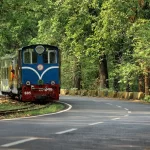Bharatanatyam
Origins of Dance Drama in Indian Mythology
Indian culture, renowned for its rich and varied expressions in architecture, handicrafts, paintings, sculptures, and performing arts, exhibits diverse ideologies, dialects, and customs. Dance, in particular, has always held a central place in Indian culture.
Legend states that at the court of Indra (Lord of the Wind), the first dance drama was performed for the Gods and demons. Bharata choreographed and staged the dance drama, which involved his 100 sons as performers and was based on Indra’s victory over the demons.
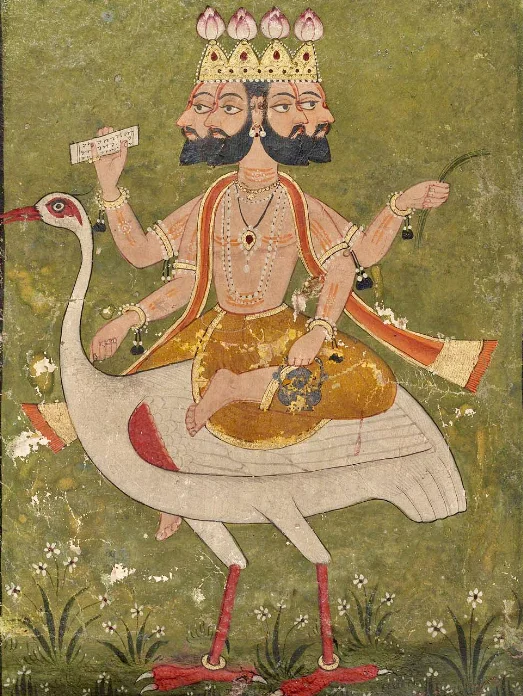
Bharata recognized the need for more women to portray the feminine roles. He approached the creator, Brahma, with this concern. Upon hearing this, Brahma summoned forth the Apsaras, or celestial nymphs, who joined Indra’s court and participated in the performance.
Indian dance styles roughly divide into two groups: folk dance and classical dance. Whether folk or classical, most of these dance styles have a distinct link to religion. People often danced as an expression of devotion, or Bhakti, to the gods.
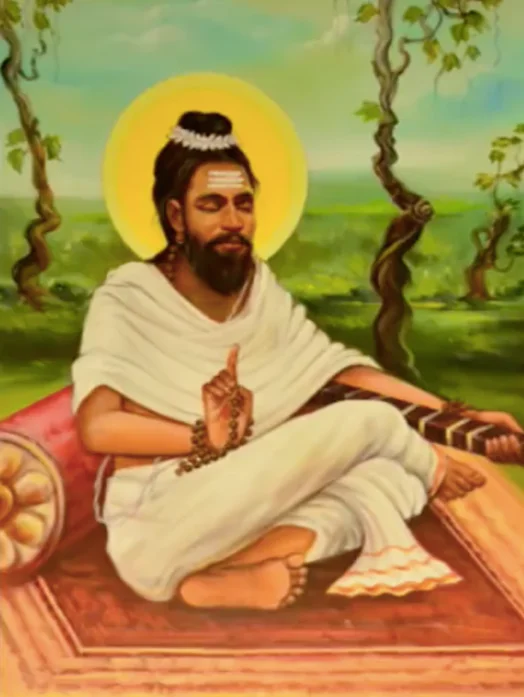
The Natya Shastra, often referred to as the Fifth Veda, forms the basis of all traditional dance styles. Though the exact period of its composition cannot be determined, legend holds that Sage Bharata recorded and codified the Natya Shastra at the request of Lord Brahma.
About Natya Shastra
नाथाथ शास्त्रं नाथाथ शिल्पं न स विद्या I
न स कला न असौयोग्यो नथतः कर्म ॥
यतः नाट्य न दृष्यथे I
The Natya Shastra holds the status of the holy book of performing arts. It extensively discusses Abhinaya, which refers to the methods through which an actor expresses or communicates.
Numerous studies have also explored various elements utilized in dance, theater, and other performing arts, such as elegant body motions and postures, mudras (hand gestures), and rasas (aesthetic experiences).
As per the Natya Shastra, there are three main categories into which art genres fall:
Nritta: Nritta is based only on body movement in time with musical rhythms. It is not an expression that requires the use of Abhinaya.
Nritta and Abhinaya are combined to form Nritya. Bhav (facial expressions) and rasa (emotion) are two important components of Abhinaya.
Natya: The term “Natya” describes artistic forms that incorporate dance, music, and discourse. Stated differently, they are theatrical interpretations of stories.
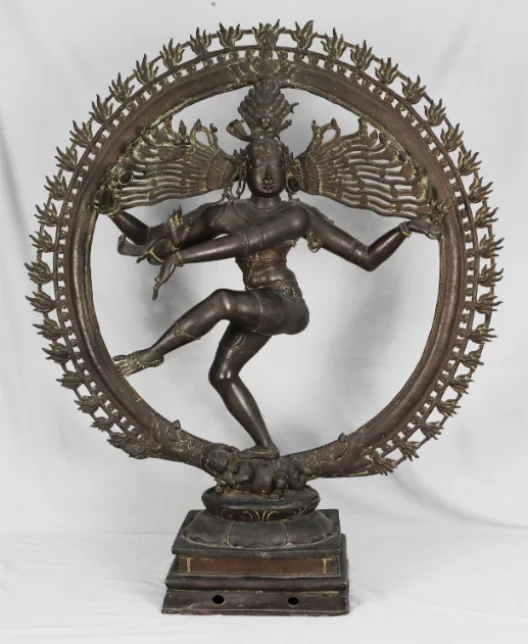
Most of India’s traditional dance styles, rooted in the Natya Shastra, have their origins in temple complexes. One such example is the Sadir Attam of Tamil Nadu, now known as Bharatanatyam.
Devadasis of Tamil Nadu
According to mythology, Urvashi, one of the Apsaras in Indra’s court, taught the devadasis to dance. Devadasis, named from Deva (deity) and Dasis (devotee), were South Indian temple dancers.
Girls were dedicated to the temple at a very young age under the devadasi system, often considered married to the deity. In a ritual called pottukattal, girls were made to wear a bottu, or golden chain, around their necks as a symbol of their union with the deity.
Devadasis, often referred to as nitya sumangali, meaning “eternally married and free from widowhood,” underwent training in the dance form known as Sadir Attam or Dasi Attam after attaining their status.
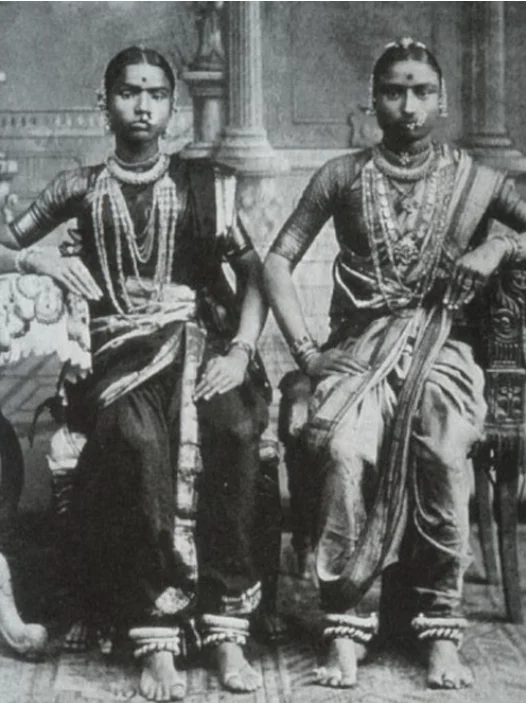
They were trained by dancing instructors called Nattuvanar or Koothiliar. The Nattuvanar, in the role of a guru, ensured the transmission of this art form from one generation to the next. After years of training, the devadasis were conferred the title of thalaikole during their Arangetral, or first dance performance.
Dance in the Sacred Halls: Devadasis in Temple Complexes
Within the temple complexes, the devadasis performed in dancing halls called natyamandapas, which prominent social strata such as kings frequented. Their dancing was considered an essential component of ceremonial worship, and they took part in other temple-related activities.
The dasis received different titles depending on the event they performed for; for instance, the Rajadasis danced at royal celebrations, while the Alankara Dasis performed at weddings and other festivities.
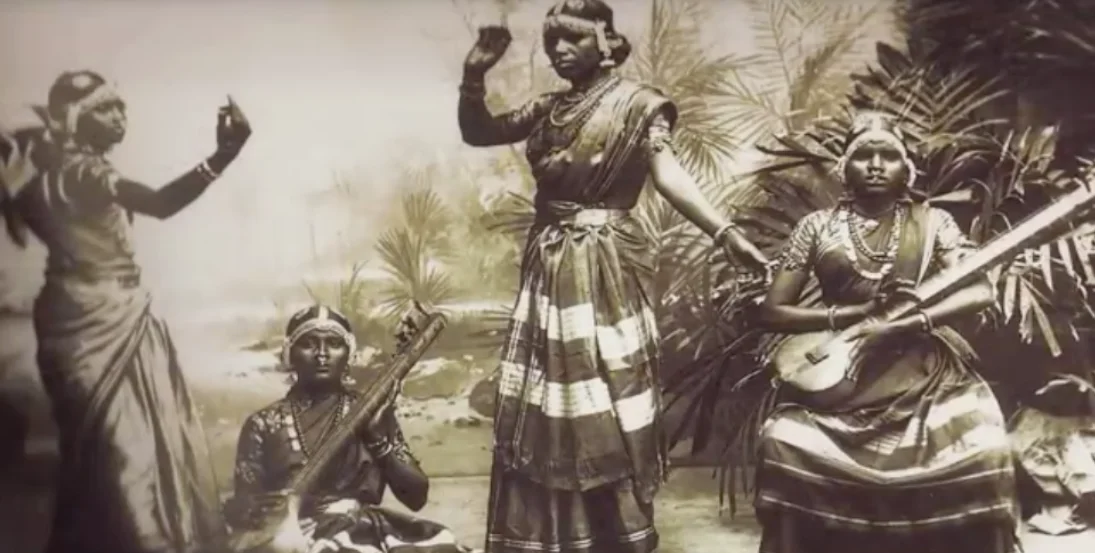
The illustrious Chola King Raja Raja Deva I is said to have supported nearly 400 devadasis, witnessing their performance of ceremonial dances and rites at the Brihadeswara Temple in Tanjore.
Since the arrival of the British in India, they despised Indian conceptions of dancing, believing western ideas were superior, and quickly relegated the devadasis to lower social classes, treating them as simple dasis (slaves) and prostitutes.
The devadasi system eventually experienced a sharp downturn as the ruling elite ceased supporting the artists and the art form. Consequently, the devadasis were compelled to turn to prostitution to survive. Eventually, even the term “devadasi” became derogatory.
In 1947, a statute was approved that abolished the devadasi system, leading to the complete eradication of the devadasi community from society. There is no trace of these families, who had been dancing for decades, even now.
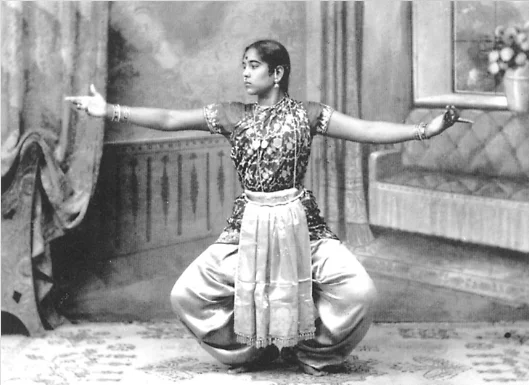
Meanwhile, celebrities worked diligently to revive the art form. E Krishna Iyer, a lawyer and independence fighter who personally studied and practiced this art form, was one of the prominent figures involved.
Preservation and Revival of Bharatanatyam
T. Balasaraswati, one of the final few devadasis to perform, is credited with preserving this age-old art form.
Rukmini Devi, who made her stage debut in 1935, changed people’s perceptions. She also founded the Kalakshetra Institute in Chennai, which promoted performing arts.
Sadir Attam, an ancient dance form, is the precursor of Bharatanatyam. It is unclear how Sadir evolved into Bharatanatyam, but this traditional dance style, which was nearly extinct, persevered through the ages.
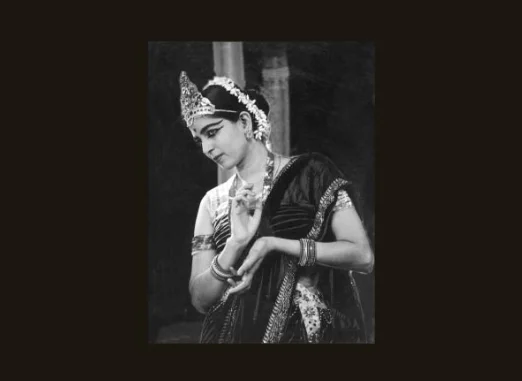
Classical Dance form of India
The name Bharatanatyam, derived from the words Bhava (expression), Raga (music), Tala (rhythmic pattern), and Natyam (dancing), is a relatively recent designation for this dance style.
Bharatanatyam draws inspiration from both the Abhinaya Darpana, attributed to Nandikeswara, and the Natya Shastra.
Similar to the Natya Shastra, the Abhinaya Darpana serves as an extensive manual detailing body motions, mudras, and other fundamental movements that form the basis of this dance style.
The foundation of Bharatanatyam lies in the mention of Tandava and Lasya in the Natya Shastra, believed to have been inspired by Lord Shiva’s dance.
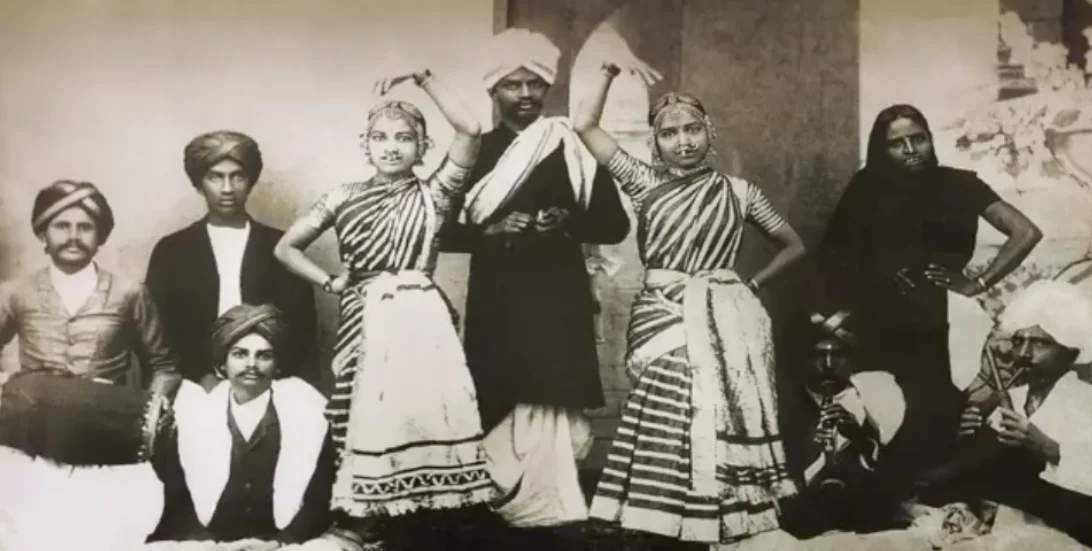
The Mythical Origins of Tandava and Lasya in Bharata’s Legend
Legend has it that Sage Bharata choreographed a play based on Samudramanthan (Churning of the Ocean) for Lord Shiva atop Mount Kailasa.
Upon witnessing the performance, Lord Shiva was so thrilled that he agreed to perform the Tandava. Shiva performed the Tandava during the auspicious Pradosham period, resulting in the famous 108 Karanas (poses) depicted on the walls of Tamil Nadu’s most important temples.
During this, Shiva realized that the Tandava was incomplete without the gentler emotions (Lasya). He subsequently taught Lasya to his bride Parvati, who then performed it for Lord Shiva. Sage Bharata later recorded these events, which served as the foundation for the Natya Shastra.
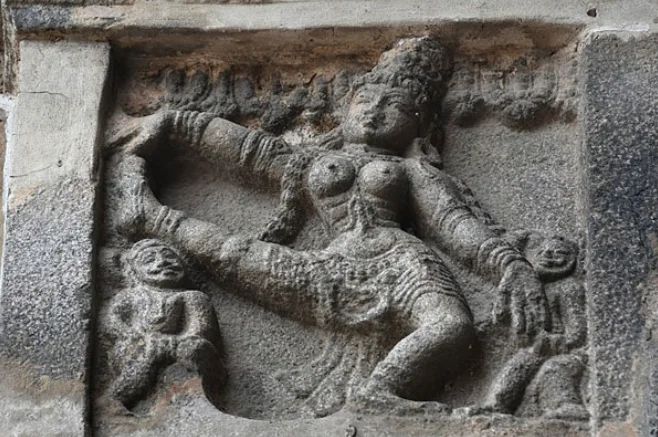
Nritta and Nritya in Bharatanatyam
Bharatanatyam comprises two basic components: Nritya, which integrates footwork with abhinaya (expression), and Nritta, which involves pure dance with intricate footwork.
In Bharatanatyam, the adavu, or footwork, forms the fundamental unit of Nritta. Three postures—Araimandi (half-seated), Muzhumandi (full sitting), and Sthanam (standing)—distinguish this dance style.
The footwork synchronizes with the musical talams, which come in three varieties: slow, medium, and quick. Unlike other Indian traditional dance styles, Bharatanatyam is renowned for its challenging footwork, rhythmic movements, and static poses.
Hastas, or hand motions, accompany footwork to convey emotions. These gestures are categorized into two types based on the shlokas found in the Natyashastra and the Abhinaya Darpana: Asamyuta Hastas (single hand motions) and Samyuta Hastas (double hand gestures).
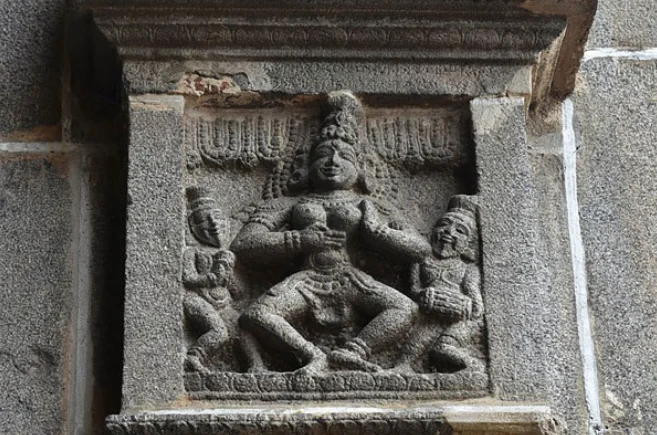
Types of Abhinaya’s
Abhinaya, which is the foundation of Nritya, is a significant feature. Abhinaya is a technique used by Bharatanatyam performers to elicit feelings and thoughts from their audience. Four categories exist for abhinaya:
- Angika Abhinaya articulating via the use of hands, legs, and other bodily parts.
- Vachika Abhinaya Speaking via songs, music, and conversations is one way to express oneself.
- Aharya Abhinaya expressiveness utilizing decorations including costumes, jewelry and make up.
- Satvika Abhinaya conveying by conjuring up the character’s mental condition.
The renowned Tanjore Quartet—Chinnayya, Ponnayya, Sivanandam, and Vadivelu—who made significant contributions to Carnatic music and dance, provided Bharatanatyam with a structured framework.
These exceptional composers, who served in the royal court of the Marathas of Tanjavur, are credited with elevating the dance to the status of a fine art and laying the foundation for modern Bharatanatyam recitals.
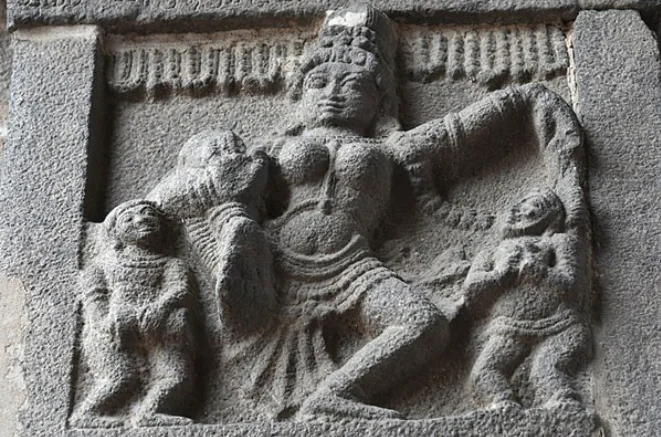
Alarippu
Alarippu, which literally means “flower blooming,” serves as the opening performance in a Bharatanatyam dancer’s recital. Based on the concept of Nritta, this dance choreography revolves around depicting the imagery of a flower blooming.
Jatiswaram
This dance style incorporates intricate footwork, gestures, and postures alongside musical swara rhythms.
Shabdam
In this composition, the artist employs Abhinaya to depict a tale or legend. The music accompanying this piece, rooted in Nritya, often narrates the storyline of the narrative. One of the most renowned Shabdam in Bharatanatyam recitals is the Mahabharata Shabdam, which portrays the gambling scene and its aftermath.
Varnam
This is the lengthiest and most intricate dance and Abhinaya performance in Bharatanatyam. It allows the dancer to utilize facial expressions, or bhav, to convey various moods and evoke emotions, making it one of the most expressive dances in the repertoire.
Padam
In Padam, the artist expresses emotions based on the Nritya principle. Utilizing elements such as bhava and rasa, the artist delves deeper into the character’s thoughts and feelings in this performance.
Thillana
Thillana, the final piece in the Bharatanatyam repertory, is based entirely on the idea of Nritta. It features quick, rhythmic movements and challenges the audience with difficult footwork, stances, and hand gestures similar to those in the preceding performance.
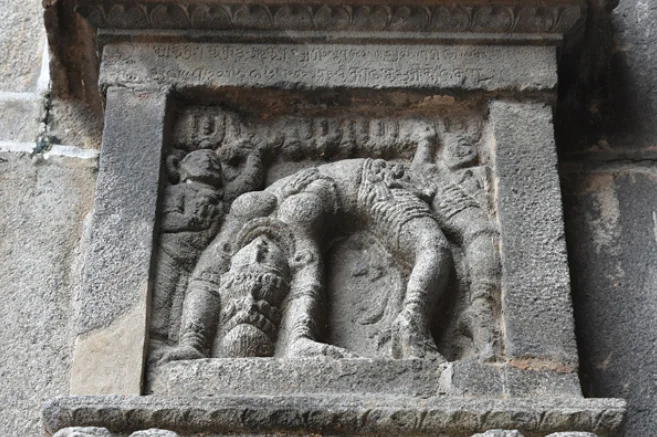
The repertory also encompasses other dances such as Managalam, Javali, Bhajan, and Keertanam.
During a Bharatanatyam concert, an orchestra provides background music for the dancer. Alongside the instrumentalists, the Guru often employs the Nattuvangam to lead the dancer and recite the rhythms (sollukettu).
Music and Instruments used in Bharatanatyam
Music and instruments play a crucial role in Vachika Abhinaya (expression through song and music) in Bharatanatyam. Carnatic music provides the rhythms and melody for Bharatanatyam performances.
The vocalist initiates the performance by singing the song, followed by the instrumentalists playing the notes. This combination of dance, vocal, and instrumental music is known as Prayoga.
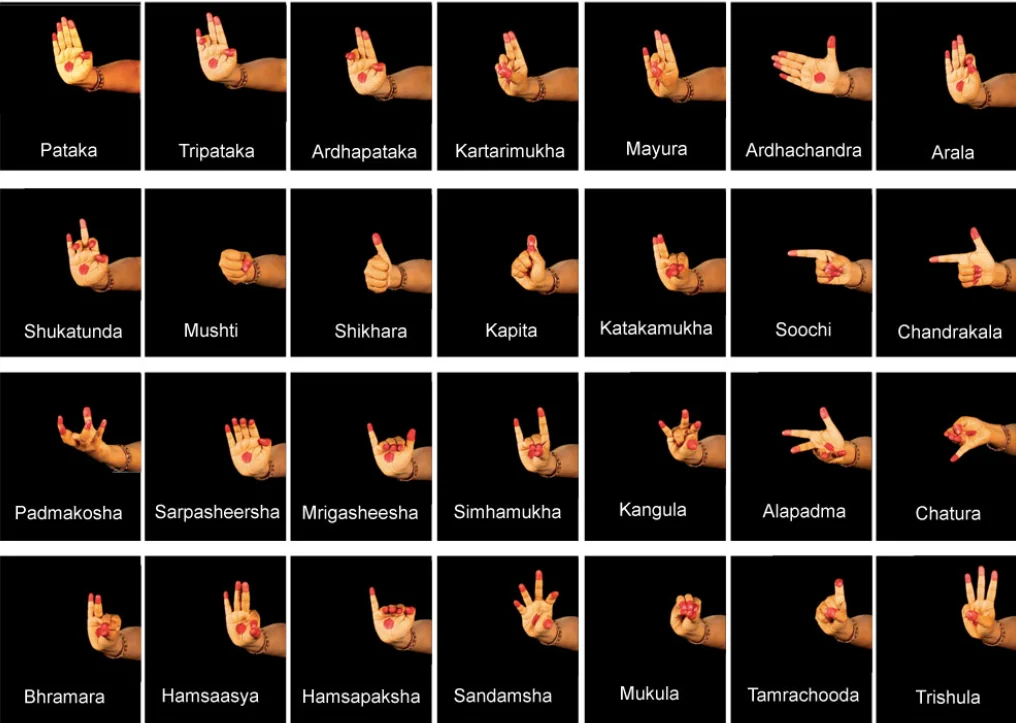
A Bharatanatyam dancer during a concert is often accompanied by instruments such as the Mridangam, Veena, Flute, Violin, Talam, Ghatam, Kanjeera, Tambura, Nadaswaram, and Harmonium.
Banis of Bharatanatyam
Over the years, gurus and teachers have modified and altered Bharatanatyam, also known as Banis, resulting in several forms as it spread from Tanjavur, the South Indian cultural hub, to other regions.
These modifications vary based on the school or style, even though the fundamental foundation of the art form remains the same.
The Tanjavur Style
Legend states that “Baroda” Kannuswami Pillai, a renowned figure in Bharatanatyam, led a group of dancers brought as dowry to the Tanjavur Maratha Princess and Baroda Prince at the Baroda court.
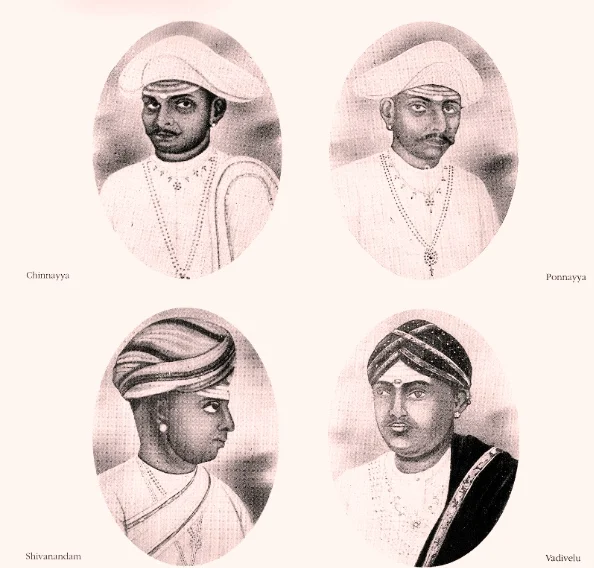
This bani, considered one of the earliest, originated from the Tanjavur court of kings, with the renowned Tanjore Quartette directly descending from the Gurus of this technique.
Kannuswami Pillai, a mentor to Kandappa Pillai, one of the most celebrated Nattuvanars (Guru/teacher) of this form, was himself a direct descendant of the Tanjore Quartette.
Kandappa Pillai introduced stylistic modifications that emphasized the importance of music and rhythm while somewhat departing from the traditional Tanjavur style.
Following this, Kandappa Pillai trained and mentored the renowned T. Balasaraswati, credited with saving this art form from extinction. In this form of Bharatanatyam, equal importance is placed on the two ideas of Abhinaya and Nritta.
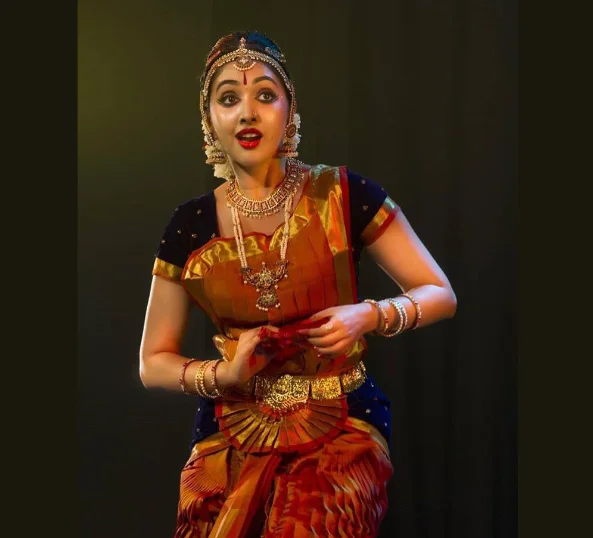
Pandanallur Style
Minakshisundaram Pillai, a direct descendant of the Tanjore Quartette, is credited with creating the Pandanallur Style. The brother-in-law of Kannuswami Pillai, Minakshisundaram Pillai, introduced his own alterations to the traditional Tanjavur style and named it after his hometown, Pandanallur.
The Pandanallur style of Bharatanatyam differs from the conventional Tanjavur style by emphasizing precise movements and being based on linear geometry. It is renowned for its delicate footwork, nuanced motions, and extensive use of linear hastas.
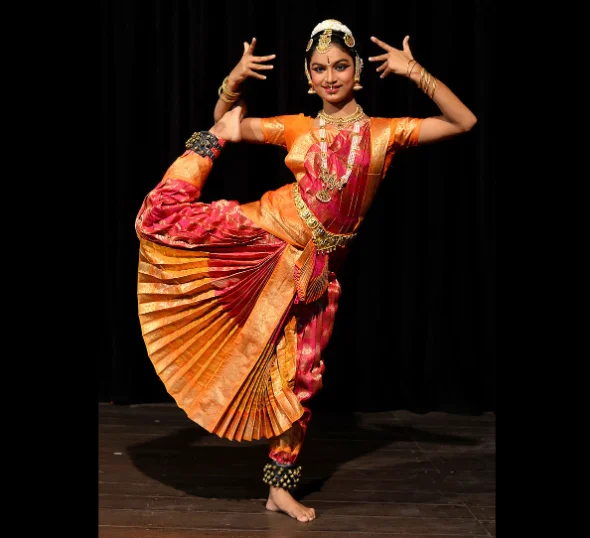
Vazhavur Style
Ramiah Pillai, hailing from the Tamil Nadu village of Vazhuvoor, pioneered the Vazhavur style. The majority of performances in this style began with a prayer to Gnana Sabesa, the presiding deity of the village.
Padma Subramanyam, a renowned performer and student of Ramiah Pillai, is celebrated for her realistic abhinaya, a crucial aspect of this technique. The Vazhavur style differs from others in its emphasis on Lasya over Tandava. It emphasizes sringara rasa more and focuses on the feminine aspects of dance. Realistic abhinaya is a hallmark of this style.
Kalakshetra Style
Rukmini Devi Arundale, a renowned Bharatanatyam performer and student of Minakshisundaram Pillai, is credited with creating this style. She established the Kalakshetra Institute in Chennai to promote Bharatanatyam as an artistic medium.
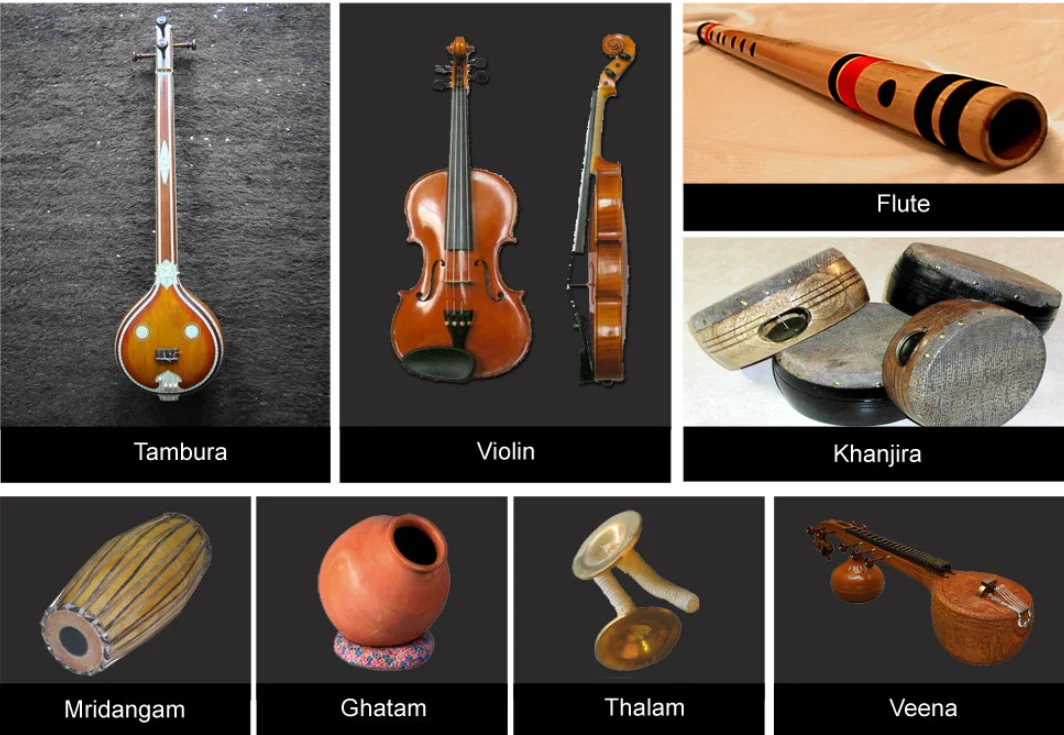
The main focus of this particular Bharatanatyam style is stylized abhinaya. Unlike the Vazhavur style, it does not emphasize lasya and sringara expressions as much. The Kalakshetra style employs a limited range of adavus and incorporates somewhat stiffer movements.
Mellatur Style
Mangudi Doirairaja Iyer created this style, renowned for emphasizing the sringara rasa and delicate footwork. This dance style allows the audience to focus on the chalenga (ghungroo) and the rhythm of the music by avoiding firm stomping of the feet by the dancers.
Costume and Jewelry in Bharatanatyam
Indian classical dancers vary their attire and jewelry based on the state they belong to. While the fundamental costume design remains unchanged, artists embellish their attire with props and other items to enhance the portrayal of characters.
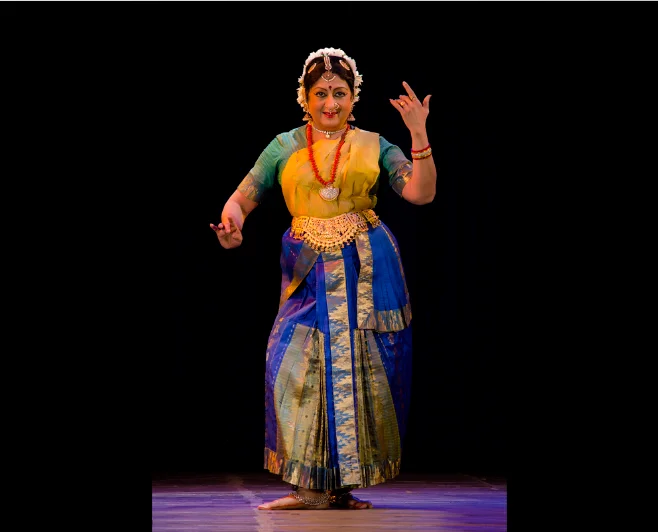
In Bharatanatyam, costume, jewelry, and cosmetics constitute elements of Aharya Abhinaya.
Over time, the jewelry and costumes of this art form have undergone several changes.
During the period of Sadir Attam, devadasis used the saree as their standard performance attire. They wore sarees resembling pyjamas, with the pallu of the saree forming the fan, or visri, which is now an integral part of the outfit.
Jewelry as Symbols of Wealth and Prestige among Tamil Nadu’s Devadasis
The devadasis of Tamil Nadu adorned themselves with jewelry made of pure gold adorned with precious stones. They often received these as payment from their clients.
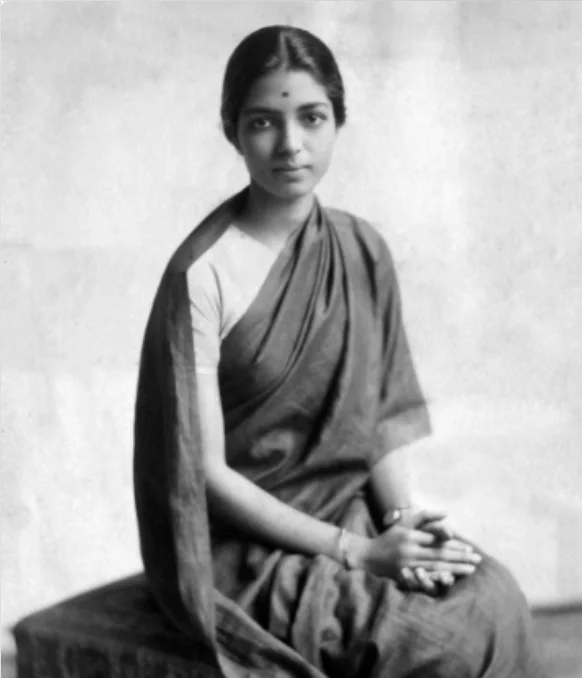
Soon, jewelry became more than just an accessory for the devadasis; it symbolized their wealth, prosperity, and influence, ensuring their financial security. As a result, the devadasis wore every piece of jewelry they owned while performing.
The Structure and Jewelry of Bharatanatyam
Bharatanatyam is characterized by its highly rigorous and structured dance style. Both its jewelry and attire exemplify this discipline. The modern era sees the popularity of a five-piece Kancheepuram silk costume, comprising a shirt (ravikkai), pants (kalkacchi), an upper body covering (Melakku/dhavani), a back piece (iduppu kacchai), and the fan (visri).
Variants of this costume may replace the pants with a long pleated skirt that includes an attached fan. An alternative outfit includes a partially sewn and cut saree adjusted to the appropriate length.
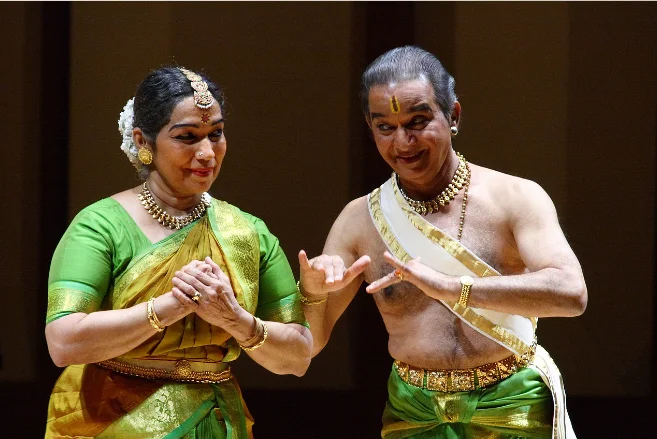
Costumes
In Bharatanatyam, male dancers may choose to wear an upper covering called an angavastram, even though the upper body is generally exposed. Additional costume components include the waistcoat, fan, back piece, and pants.
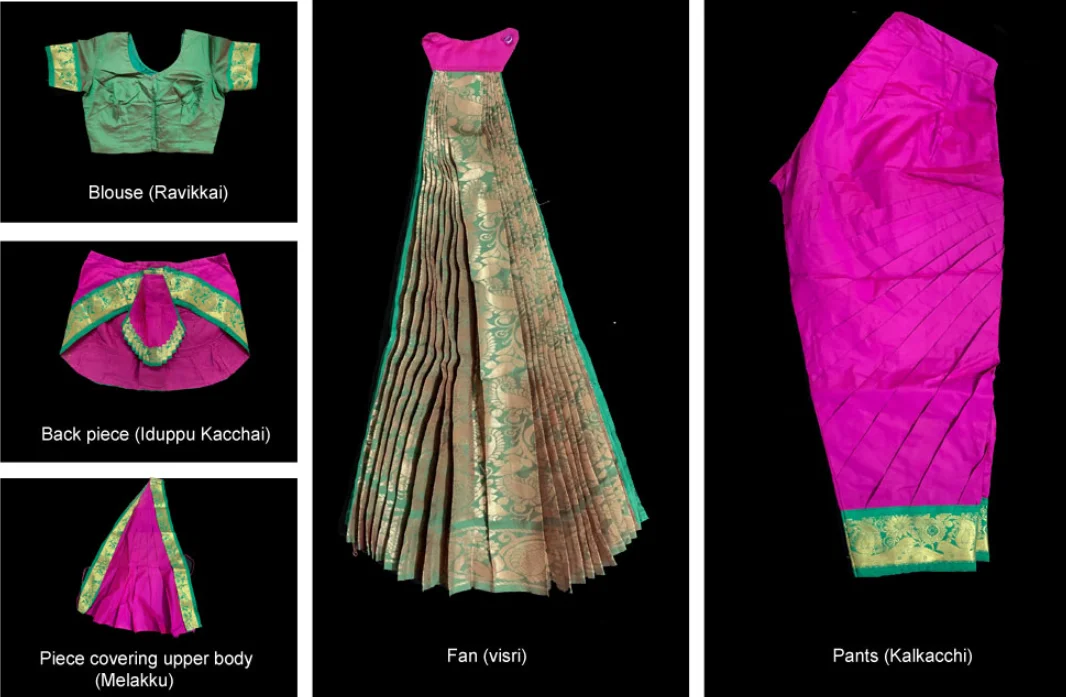
The jewelry worn by Bharatanatyam dancers is distinctive to the Tanjavur region of Tamil Nadu. Dancers adorn themselves with kanakambaram (orange and yellow flowers) and mallipoo (jasmine flowers) in their hair, which they plait.
The dancer further embellishes her hair with the rakkoti, a type of kunjalam traditionally worn by Tanjavur women.
Head, nose, ear, neck, hand, fingers, waist, and feet are all adorned with jewelry.
Head: Netri Chutti and Surya Chandran
Mukuthi, nathu is the nose
Todu, Mattal, Jimikki, and Ear
Neck: lengthy necklace (muthumalai, kasumalai) and choker (padakam, mangai malai)
Hands: vangi, valayal
Modiram – finger
Waist: ottiyanam
Ghungharoo – feet
Aside from this, embellishments linked to certain characters in the tale can be added to improve storytelling and abhinaya.
Evolution and Global Appeal of Bharatanatyam
Bharatanatyam, as an art form, has evolved over time in terms of fashion, jewels, and costumes. It has become one of the most well-known Indian classical dances, performed in temple complexes and theaters worldwide. Young students from many countries are attracted to it, seeking to learn the intricacies of this art form and to enrich themselves.
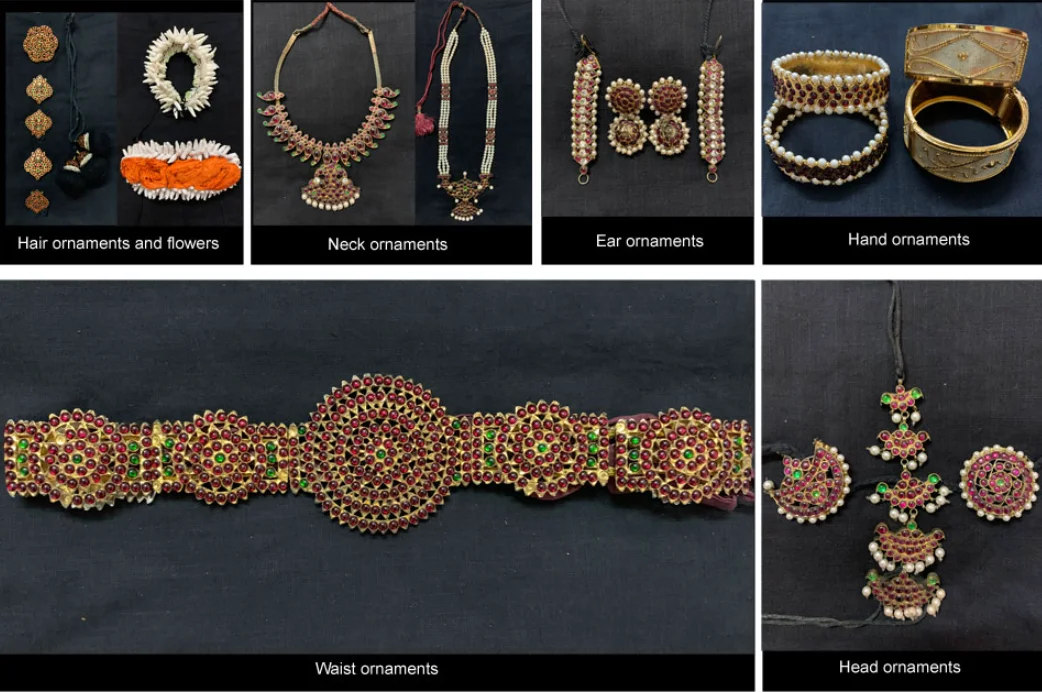
Throughout time, Indian dance styles have changed as they adapted to a rapidly changing world, and Bharatanatyam is no exception. These days, it incorporates songs from diverse origins that illustrate the blending of other civilizations rather than solely relying on Carnatic music.
Artists now present Bharatanatyam in groups, exploring a variety of topics related to society, science, and culture, whereas it was once performed exclusively by soloists. Despite all these modifications, the fundamentals of this dance style have remained unchanged.
ALSO READ: Darjeeling Himalayan Railways Engineering Marvels
